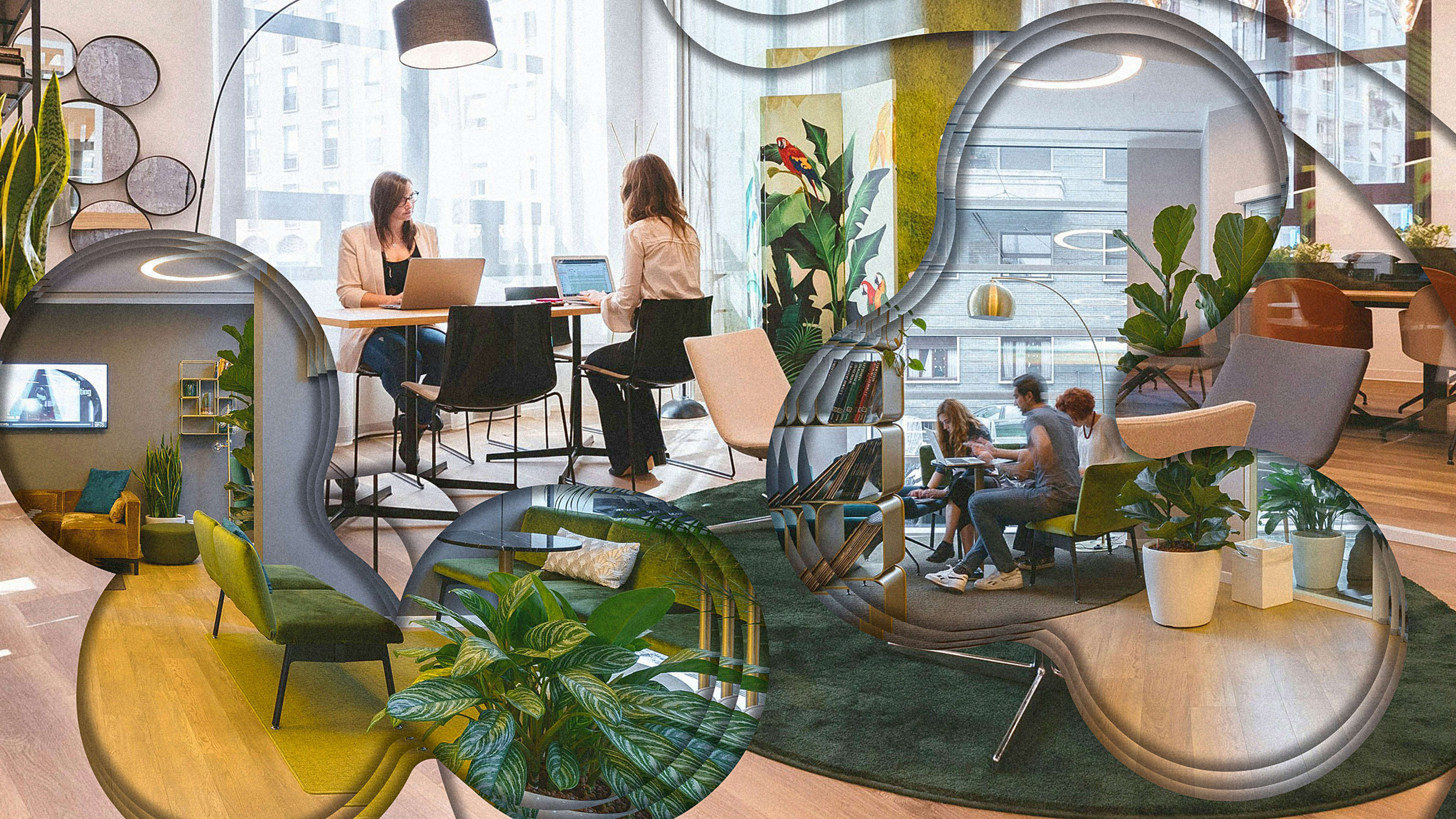Private offices, chairs, desks, and conference rooms: Traditionally those would have been the ingredients for a typical office design. But according to a new report from WeWork, those quintessential elements are falling by the wayside in 2024. Demand for private offices, private meeting rooms, and conventional workstations is falling. Replacing them is a growing demand for informal spaces that look and feel more like a lounge than a buttoned-up corporate workplace.
Based on user surveys and qualitative data from roughly 3,000 design-related requests from customers, WeWork’s first design report offers a window into the evolving state of the office today. For the foreseeable future, it’s more likely to be furnished with couches, café seats, and lounge chairs than cubicle panels and desks.
The data shows an 80% drop in requests for executive offices from 2018 to 2022. Requests for pantry space and communal areas have doubled since 2021. Between 26% and 35% of all available chair-and-table setups, or “work points,” are informal settings that can also function as places to catch up with coworkers, socialize, or have impromptu meetings. The old model of a room full of desks and chairs isn’t exactly dead, but it’s definitely not in vogue.
Blame or credit the pandemic, says Ebbie Wisecarver, WeWork’s chief design officer. The experience of working from home was, for many, a kind of gateway drug for being productive in unconventional settings, whether in a home office, at a kitchen table, or on a lumpy couch.
Recognize your brand’s excellence by applying to this year’s Brands That Matter Awards before the final deadline, June 7.
Sign up for Brands That Matter notifications here.
